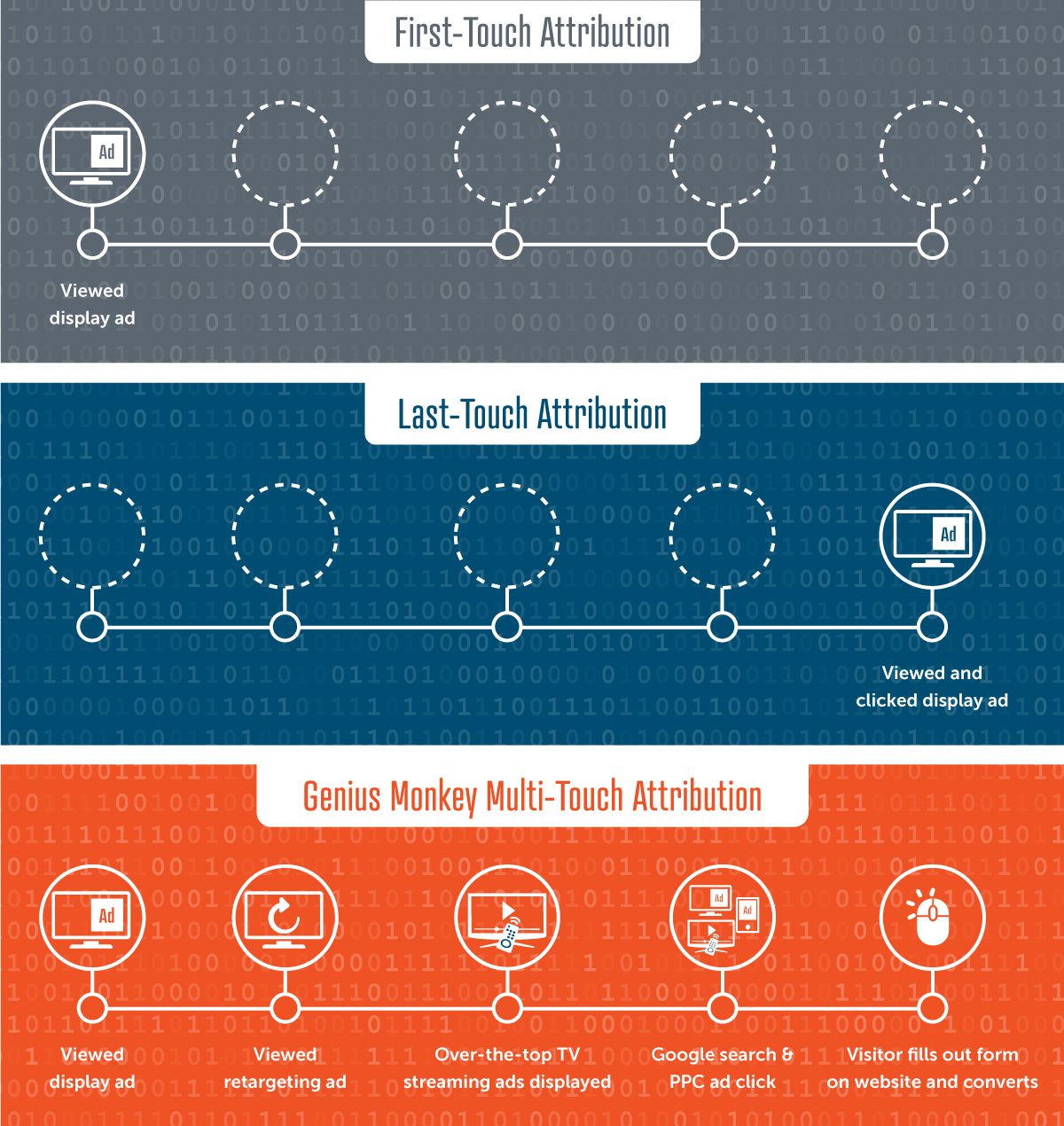
In 2017, 76% of marketers reported that they currently had or planned to have marketing attribution. Fast forward to today, where that number has only increased, as marketing attribution is a crucial part of any marketing strategy. With attribution being so widely used in one form or another, marketers must use an attribution model that is the right fit for them. A minuscule 22% of marketers believe they’re using the right attribution model, leaving 78% wondering what they should be doing.
What is attribution?
Simply put, attribution is the process of giving credit, or attributing, conversions to certain ads or touchpoints in a consumer’s purchasing journey. With attribution, you first identify the user’s actions that point to a conversion, then give a value to each action or event. HubSpot said it well when they defined attribution as “interactions a person or group of people took along their journey toward a desired outcome or ‘conversion’ point.”
Let’s talk about attribution and which one is best for your marketing campaigns.
Single-Touch Attribution: First Touch and Last Touch
Single-Touch attribution gives total credit—100%—to only one touchpoint. So, if a prospect sees your ad on Facebook and Instagram, visits your site every single day, and even receives marketing emails from you, and then eventually converts, with Single-Touch attribution, only one of those will take credit, and it’s usually the very first or very last action. This doesn’t seem fair to the other influencing mediums along the way, does it?
As we stated, with Single-Touch models there can be only one winner, and that is decided by which touchpoint in time they were. Here is a better look about how most attribution softwares define that:
First-Touch Attribution
This model primarily cares about a customer’s first point of contact or first impression they encountered. That first touch gets all the credit, despite future interactions that may occur. If you are a business that is all about driving new audiences, requires very few touchpoints, and gets people to convert right away with no further interactions, this may be for you. However, we believe most brands need more interactions than they think. In fact, Genius Monkey data shows the average amount of digital touchpoints alone across all verticals is above 52.
Last-Touch Attribution
With Last-Touch Attribution, you guessed it, the conversion credit is awarded to a customer’s final touchpoint or last advertising channel that they engaged with. This does not factor in any previous interactions—only the last one matters. This is what most brands currently rely on, as it is what Google Analytics and other analytics platforms are defaulted to.
According to Google, “As the industry continues to evolve, last-click attribution will increasingly fall short of advertisers’ needs.” As you can see, in this Single-Touch attribution model, you don’t get to see how your different marketing elements are working together, and thus you are not measuring the true effectiveness of any of your campaigns. You are instead seeing which campaign was lucky enough to get to the user first by targeting a new area, for example, or hitting them last by focusing purely on retargeting. In fact, many digital marketing vendors will purposely focus on retargeting without telling the company they’re advertising for, simply so they can look better by stealing credit from others in a last-touch model.
According to Genius Monkey attribution data, the average person is exposed to over 150 impressions of a brand, from various mediums, before converting or purchasing.Thus, by choosing just one of those impressions with a single-attribution model you are not giving credit to most of your marketing channels.
Surely there must be a better way. This leads us to Multi-Touch attribution.

Multi-Touch Attribution
This name basically speaks for itself—in a multi-touch attribution model, multiple touchpoints are considered. With this, you know when a converting user saw and engaged with multiple marketing mediums and campaigns. This allows you to distribute credit to each of those mediums instead of just one. Multi-Touch Attribution allows you to receive a more accurate breakdown of credit, so you can make more data-driven decisions on how to evaluate performance, suggest optimizations, and allocate budget.
A Real-Life Example of Multi-Touch Attribution
Client Example: Furniture Store - Joe’s Home Store Furniture (names altered for privacy)
- Targeted user gets served a Facebook display Ad from Vendor A
- That user then gets served 10 online display ads over a week from Vendor B
- Vendor B then serves the user 2 video ads
- User watches the full video, then comes to the site to shop for 2 minutes
- Vendor B then serves the user a native ad
- Vendor B then serves the user a email ad that the user clicks on
- User continues to shop at the same product from the video ad session
- Vendor A serves a retargeting ad that the user clicks on
- User purchases during this session
Per single-touch attribution, either first or last touch in this scenario would give credit to Vendor A. However, this doesn’t seem fair, as Vendor B had more engagement and drove the two website research sessions during the conversion cycle. The savvy marketer would instead use a multi-touch attribution model to allow credit to go to both Vendor A and Vendor B, thus providing a full picture of marketing mediums working together.
See What Our Clients Are Saying!
Katie Wurdack, Digital Marketing Manager of Colorado State University Online, details how Genius Monkey’s unique, proprietary path to conversion reporting works for CSU Online.
Linh Judin, founder of Open Lock Marketing explains how Genius Monkey’s reporting and data gives a seamless, real-time look into ad performance effectiveness.



